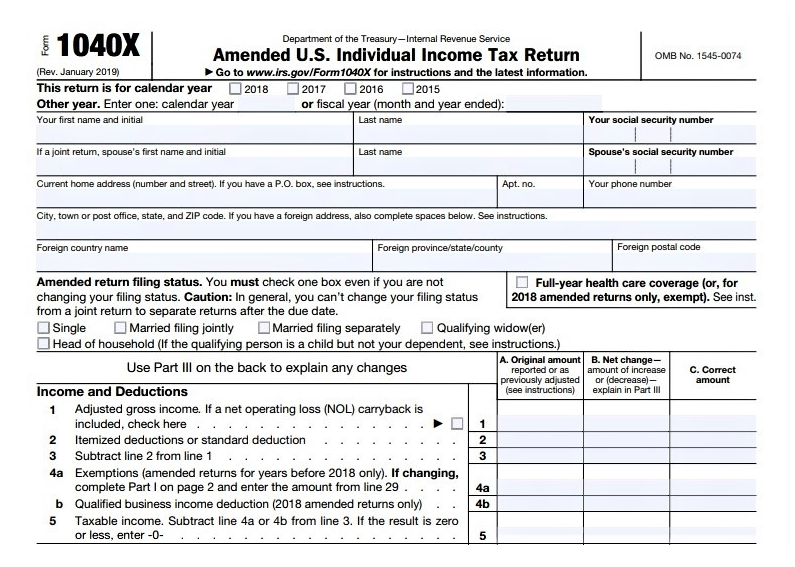IRS | June 4, 2019
Although the IRS often finds and corrects errors during processing, there are certain situations in which a taxpayer may need to file an amended return to make a correction. Here are some quick tips for anyone who discovered they made a mistake or forgot to include something on their tax return.
Use the Interactive Tax Assistant. Taxpayers can use the Who should file an amended return? interview tool to help determine if they should file an amended return to correct an error or make other changes to their return.
Don’t amend for math errors or missing forms. Taxpayers generally don’t need to file an amended return to correct math errors on their original return. The IRS may correct math or clerical errors on a return and may accept it even if the taxpayer forgot to attach certain tax forms or schedules. The IRS will mail a letter to the taxpayer, if necessary, requesting additional information.
Wait until receiving refund for tax year 2018 before filing. Taxpayers who are due refunds from their original tax year 2018 tax return should wait for the IRS to process the return and they receive the refund before filing Form 1040-X to claim an additional refund. It may take the IRS up to 16 weeks to process amended returns.
File Form 1040-X to amend. Taxpayers must file on paper using Form 1040-X, Amended U.S. Individual Income Tax Return, to correct their tax return. While taxpayers can use software to prepare Form 1040-X, they can’t file Form 1040-X electronically. Taxpayers should indicate the year of the original return and explain all changes made by attaching any forms or schedules. Taxpayers then sign and mail the Form 1040-X to the address listed in the instructions. Taxpayers filing Form 1040-X in response to an IRS letter should mail it to the address shown on the letter.
Amend to correct errors. Taxpayers should correct their return if they find that they should have claimed a different filing status or didn’t report some income. Taxpayers who claimed deductions or credits they shouldn’t have claimed or didn’t claim deductions or credits they could have claimed may need to file an amended return. Changes made on a federal return may also affect state taxes. The taxpayer should contact the state tax agency to see if this is so.
Pay additional tax. Taxpayers who will owe more tax should file Form 1040-X and pay the tax as soon as possible to avoid penalties and interest. They should consider using IRS Direct Pay to pay any tax directly from a checking or savings account for free.
File within three-year time limit. Taxpayers generally have three years from the date they filed their original tax return to file Form 1040-X to claim a refund. They can file it within two years of the date they paid the tax, if that date is later.
Use separate forms if amending more than one tax year. Taxpayers must file a Form 1040-X for each tax year and mail each year’s form in a separate envelope to avoid confusion. They should check the box for the calendar year or enter the other calendar year or fiscal year they are amending. The form’s instructions have the mailing address for the amended return.
Track amended return status online. Taxpayers can track the status of their amended tax return in English and Spanish using Where’s My Amended Return? Amended returns take up to 16 weeks to process and up to three weeks from the date of mailing to show up in the system. Before that time, there’s no need to call the IRS unless the tool specifically tells the taxpayer to do so.
Source: IRS

